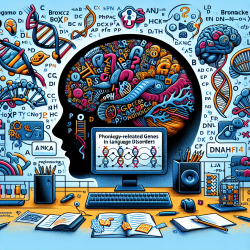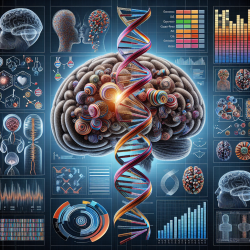Exploring Phonology-Related Genes in Language and Learning Disorders
In the realm of special education, understanding the genetic underpinnings of language and learning disorders is crucial for developing effective interventions. The research article titled "Identification of Phonology-Related Genes and Functional Characterization of Broca’s and Wernicke’s Regions in Language and Learning Disorders" provides valuable insights into the genetic factors influencing phonological processing, a key cognitive domain in disorders such as dyslexia, specific language impairment (SLI), and dyscalculia.
Key Findings and Implications for Practitioners
The study identifies several "phonology-related genes" that play significant roles in language processing within the brain's Broca’s and Wernicke’s regions. These genes, including ATP2C2, DNAAF4, and FOXP2, are implicated in various aspects of phonological processing and may contribute to the symptoms observed in language disorders.
Practitioners can leverage these findings to enhance their understanding of the biological basis of language disorders. By recognizing the genetic components involved, educators and therapists can tailor their approaches to address specific phonological deficits, potentially leading to more effective interventions and support strategies for students with language impairments.
Encouraging Further Research
The research underscores the need for continued exploration into the genetic factors associated with language disorders. Practitioners are encouraged to stay informed about the latest developments in this field through professional development opportunities such as conferences, webinars, and publications. By engaging in ongoing research and collaboration, educators can contribute to the growing body of knowledge and improve outcomes for students with language and learning challenges.
Conclusion
Understanding the genetic basis of phonological processing in language disorders is a critical step towards developing targeted interventions. The identification of key genes such as ATP2C2, DNAAF4, and FOXP2 highlights the complex interplay between genetics and language development. As research continues to evolve, practitioners have the opportunity to apply these insights to enhance their practice and support students with language impairments more effectively.
To read the original research paper, please follow this link: Identification of Phonology-Related Genes and Functional Characterization of Broca’s and Wernicke’s Regions in Language and Learning Disorders.










